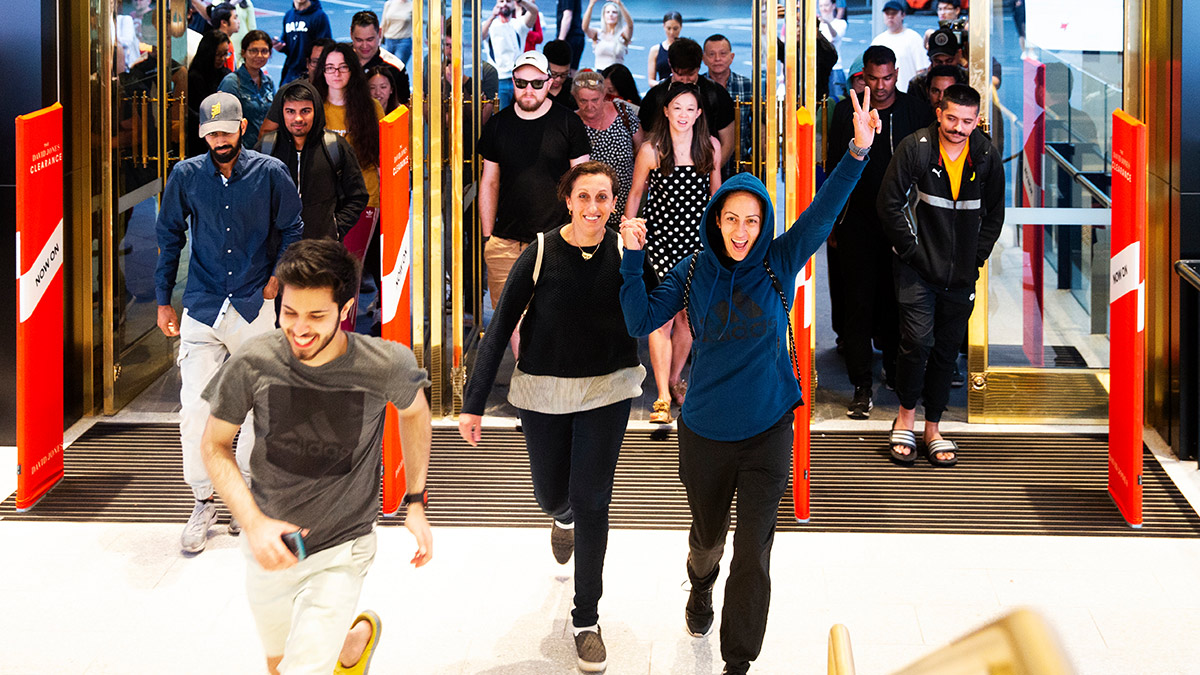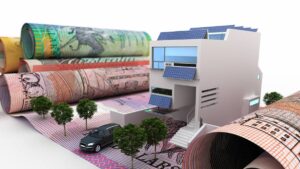Think Big: Australians saved an extra $100bn in the pandemic – will they spend it in 2021?

Shoppers rush in to make the most of last year's Boxing Day sales promotion. (Pic: Getty)
- Australia’s household savings rate surged by around 20 per cent in the six months to September
- Low rates, fiscal support and strong consumer confidence will support economic growth next year
- The RBA’s meeting on February 2 will provide the first update on the 2021 interest rates outlook
Stuck at home with nowhere to travel, Australians responded to the COVID-19 pandemic by padding their bank accounts, CBA says.
Analysing the year that was, chief economist Stephen Halmarick said data from the bank showed the pandemic actually resulted in a higher flow of income to CBA accounts.
The bulk of those gains came from the government’s emergency response measures, including JobKeeper and JobSeeker as well as additional pensioner assistance payments.
But Halmarick said bank account income flows from the private sector are also picking up, due to tax cuts and a strong rebound in the labour market.
The net result is that “household disposable income is growing at a rate vastly above wages growth”, Halmarick said.
And what are Aussies doing with the extra cash? For the most part, saving it.
Counting pennies
Data from the ABS shows the household savings rate surged from 7.6 per cent in March to 22.1 per cent in the June quarter, with similar growth through the end of Q3.
By CBA’s calculations, that means Aussies have saved an extra $100 billion during the pandemic – equivalent to around five per cent of GDP.
Given domestic consumption comprises around 60 per cent of GDP, Halmarick said the extra savings buffer will provide a “significant amount of support” to the economy next year.
But that’s not to say that penny-pinching has been taken to the extreme.
Halmarick said analysis of CBA’s credit and debit card data showed annualised spending growth rose by 12 per cent to December 11 – a strong rebound from the April lows of -20.1 per cent.
Spending on goods is up 19 per cent (services +4pc). And the combination of low interest rates and government support is reflected in the Household Spending Intentions index, which saw sharp gains for home-buying and retail-spending intentions.
Add it all up, and Australia’s economy looks to have emerged from the crisis with a short sharp recession and a strong 2021 growth outlook.
Halmarick said that along with the savings rate and the housing market, increased domestic tourism and strong consumer confidence should also help drive economic activity.
Government spending
At the policy level, all that activity is expected to flow through to a small reduction in the federal government’s post-pandemic budget deficit (which is still big).
To pay for all that fiscal support, the government will still be active in the bond market as it continues issuing debt through the first half of next year.
But the RBA has committed to buying a chunk of it, through its $100bn QE program announced in early November.
In addition, benchmark interest rates are expected to stay at rock-bottom through the medium term (the next 2-3 years).
As a result, the interest costs on that bond issuance should remain below one per cent of GDP all the way through 2023/24.
“It remains clear, therefore, that the economic return of the increase in Commonwealth debt will far exceed the interest costs of that debt,” Halmarick said.
RBA crystal ball
Turning to the RBA, Halmarick said the key date for investors in the new year is February 2, when the central bank convenes for its first board meeting.
So far, the RBA has been direct in its communication about the outlook for interest rates, which are expected to stay at rock bottom for “at least three years”.
But jobs growth has been booming into the end of the year. And Halmarick expects to see some changes to the bank’s economic forecasts when it releases its quarterly policy statement on February 5.
The updated forecasts will provide a “clear signal” on where monetary policy is headed in the second half of next year, Halmarick said.
And in particular, “how long they are likely to persist with 3-year explicit forward guidance”.
UNLOCK INSIGHTS
Discover the untold stories of emerging ASX stocks.
Daily news and expert analysis, it's free to subscribe.
By proceeding, you confirm you understand that we handle personal information in accordance with our Privacy Policy.








